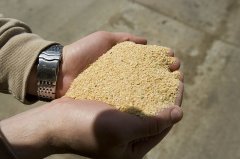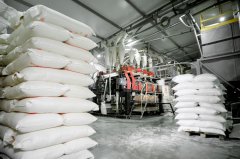The pasta market in the UAE developed steadily until 2020, when there was a decline in sales in kind due to an increase in cost to the end consumer, as indicated by a significant increase in cost. At the same time, the largest part of this growth, recorded in 2020, fell on instant noodles, sales of which increased by almost 11%.
By 2021, the pasta market in physical terms has not recovered: sales volumes were at the level of 39.5 thousand tons (-3.4% relative to the peak of 2019).
In the structure of the UAE pasta market, instant noodles predominate in value terms: in 2021, it accounted for about 72% of all sales of the sector or 113.7 million US dollars (-7.0% by 2020). At the same time, the most popular among this type of noodles was packaged, which was sold for a total of 81.8 million US dollars. USA (-6.2%). Sales of more traditional dry and fresh (chilled) pasta amounted to $43.0 million in 2021 (-4.2%).
The main channel for the sale of pasta in the UAE is retail, the share of which at the same time until 2020 was steadily declining, giving way to the HoReCa segment. However, quarantine restrictions in 2020 changed this trend: the share of retail sales increased by almost 10 percentage points to 86.8%. But already in 2021, the share of retail decreased to 83.5%. In the future, it is expected that the trend to reduce the sale of pasta through retail channels will resume.
A significant part of the UAE pasta market is divided among a small number of companies. In 2021, 45% of sales in value terms accounted for the Indonesian company Indofood Sukses Makmur, followed by Nestlé SA with a share of 16.7%. The local Emirates Macaroni Factory was in third place with a share of 6.4%.
In 2021, the import of pasta from the UAE amounted to 62.5 thousand tons in the amount of 122.0 million US dollars. In the structure of imports of agricultural products, the share of pasta in physical and value terms remained insignificant throughout the period under review. Over the period 2017-2021, imports of UAE pasta grew by an average of 6.8% in physical terms per year and by 8.7% in value.
During 2017-2021 . Saudi Arabia maintained the first position in the structure of pasta exporting countries in the UAE in value terms. In 2021, the import of pasta from this country reached 35.6 million US dollars, an increase of 4.9% compared to the previous year, which allowed it to take a share of 29.2% of the total value of imports of pasta from the UAE. Italy (16.6%), the Republic of Korea (8.8%), Oman (4.0%), and the Philippines (3.9%) were also major suppliers of pasta in 2021.
Saudi Arabia (22.3%), Italy (18.6%), China (6.0%), the Republic of Korea (5.3%), Malaysia (3.5%) and India (3.5%) occupied the leading positions in the structure of UAE pasta imports in physical terms.
In 2021, the average price per ton of pasta on the basis of CIF delivery was 1,950 US dollars. Among the largest suppliers, the lowest price was observed for products supplied from China (42.0% below average) and India (17.1% below average). The highest prices were for products from the Republic of Korea (65.6% above average), Oman (54.0% above average), Saudi Arabia (31.1% above average).
As a result of the closure of catering establishments during the quarantine period, the demand for rice, pasta and noodles in the retail trade increased significantly in the country, which provided them with the status of essential goods for all consumers of all incomes and led to the accumulation of stocks of goods in anticipation of a possible shortage. The growth was so significant that some enterprises were forced to set limits on the number of goods that one consumer could purchase. After the quarantine was completed, demand remained at a fairly high level, due to the opening of restaurants and cafes.
The growing popularity of gluten-free pasta, pasta enriched with useful components and with natural food additives.
There are different types of pasta on the market — whole grain, quinoa, gluten-free, with spinach. The popularity of Mediterranean cuisine and Italian pasta, in particular, is also growing in the country.















